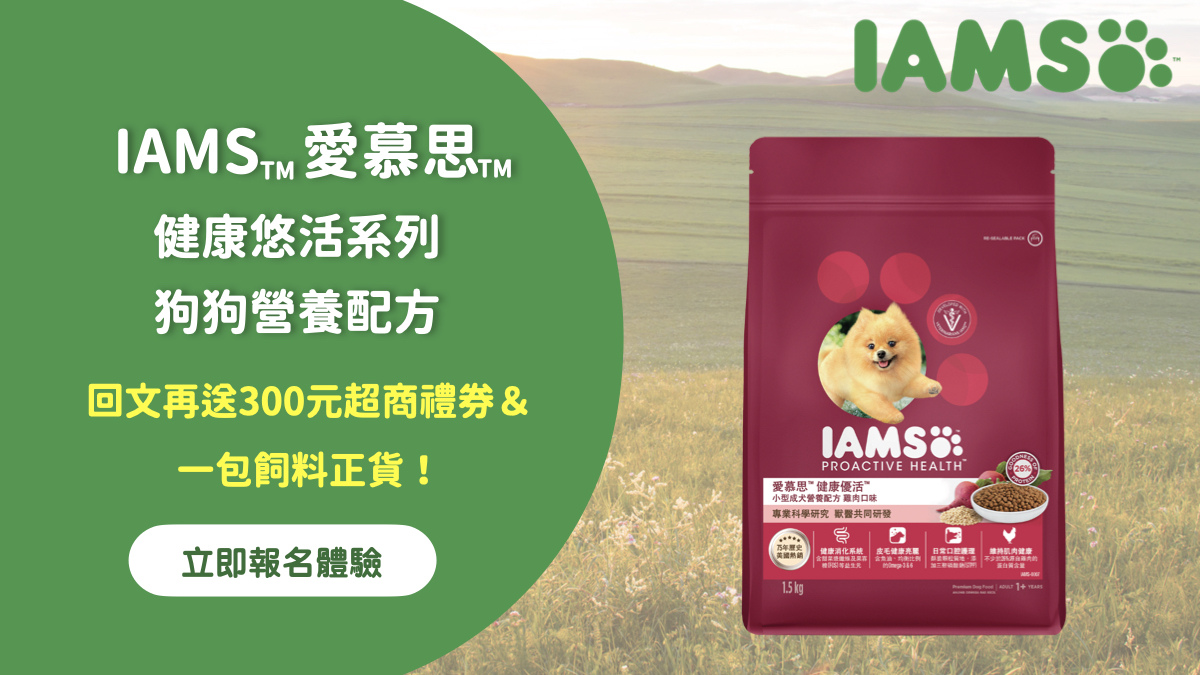Penrose tiling size of infinite using Kung's clusters (album)
The Penrose tiling is one of the most famous and complex tessellation patterns, and has been drawn and expressed in many different ways.( ) This fivefold symmetrical tiling is associated with the discovery of quasicrystals and has ignited numerous studies in the field.. In this study, the author just concentrated on the variation of Penrose tiling and how to extended tiles to infinite size.
Here are some of most systematic procedures to draw defect free Penrose tiling, most of all it can be extended to infinite and defect free. (Here are some of the most systematic procedures for drawing defect-free Penrose tiles, and it can be extended to infinite and defect-free. ) and make the inner structure Predictable
The original Penrose tiling is a standard five-folded symmetric tiling composed of three of the six regular decagons of Figure 1,. As shown in Figure 2a. It the most tranditional pentagonal Penrose diagram, and Figure 2a rotating at an angle of 72 degrees can bring it back to the starting point, or origin.
The concept of atoms and molecules is used to describe how the six orthorhombic decagons formed by fat and thin rhombi (molecule-like), and then using the concept of polymer clusters to recombine some of the six orthorhombic decagons forming several different Penrose types of pentagons ( Penrose-like clusters), and also to define the meaning of defects within the clusters.... Different colors are used to position the pentagons and to highlight the differences in the structure of the clusters. In the early days of drawing, it was very useful to determine the correctness of a pattern by the difference in color. The concept of cluster coupling, the transformation of molecular coupling at the cluster boundaries, was used to create an infinitely large defect free Penrose tile map. This concept of molecular chemistry at cluster boundaries is hoped to be useful in understanding the formation of quasicrystals of fivefold alloys. Coupling is not quite the same as tessellation, where the coupling is a partial superposition of the pattern, and sometimes it is necessary to change the regular decagon of the overlapping parts (like molecules), but without affecting the prototypes of other neighboring molecules, in order to satisfy the requirement of zero defects. If defects are not a concern, Penrose tiles are available everywhere in a fancy way. Here the different groups of configuration are drawn as systematically as possible, illustrating as carefully as possible the possibility of reaching infinity.
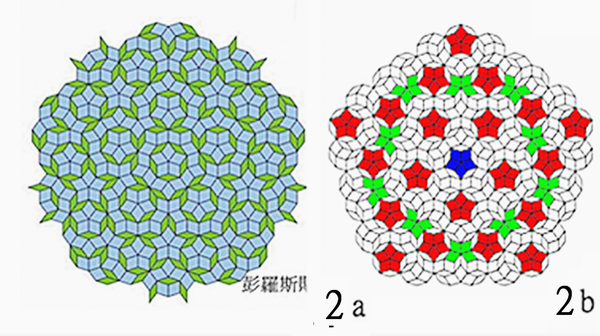

Fig 1 Two fat and thin equilateral rhombuses at 36° and 72° angles (regarded as two different atoms, with each atom consisting of four equidistant chains), can form six different basic configurations of regular decagons (regarded as molecules), as shown in Figure 1.
.
Fig. 3 show a group of Cluster for pentose tiles of bloated type Penrose tiling, which contains 66 molecules (regular decagon) and no defects. A variant of b to h, Fig 4 is the slim type which contains 55 molecules (regular decagon). Fig 5 can be counted as normal type of Penrose tile containing 60 molecules ( regular decagonal). These above Penrose tiling may bot be five fold symmetric. Fig 6 the cluster my be counted as a new type composed of five regular decagons on each side,and sixteen chain bonds on each side . Fig 7 the cluster contains defect, In the strict definition of a Penrose tile, all the fat and thin rhombuses (atoms, bricks) must be contained in any one of the 6 types of regular decagons (molecules).--Each cluster defined in this article, has a shape similar to the Penrose regular-pentagon tile , composed of five regular decagons on each side, and eighteen chain bonds on each side. (Each cluster consists of five regular decagons per side, similar to Penrose tiling pentagons, or eighteen chain bonds per side.,)
The red color marks a type decagon. the light blue color marks the type-d decagon and the yellow color represents the type-e decagon. The defect defined here is that any brick (atom) that cannot be contained in any of the six decagons (regular decagons) is marked as shadpw color. In the center of cluster marks blue color.
The positioning with different colors helps to analyze the overall structure orientation and to discern new possible defects. In the initial drawing, positioning with different colors helps to analyze the direction of the overall structure and identify new possible defects.
As a result, we might be able to discover a systematic approach for drawing unlimited Penrose tiles with no defects. Now it is possible to systematically draw large pictures. here we used a term couple which is different from tessellation to describe the way to put different clusters closely together.
((In the early days of painting, it is very useful to determine the correctness of a pattern by the difference in color,
Here we use a different term couple than mosaic to describe the way of bringing different clusters close together. The concept of cluster coupling, the transformation of molecular coupling at cluster boundaries, is used to create an infinite defect-free Penrose , The concept of cluster coupling, the transition of molecular coupling at cluster boundaries, is used to create an infinitely large defect-free Penrose tiling. This concept of cluster boundary molecular chemistry is expected to help understand the formation of quasicrystals in quintuple alloys. Coupling is not the same as mosaicism. Coupling is the partial superposition of patterns, and sometimes it is necessary to change the regular decagon of the overlapping parts (such as molecules),But it does not affect the prototypes of other adjacent regular decagons (molecules), so as to meet the requirement of zero defects. If imperfections aren't an issue, fancy way Penrose tiles are everywhere. Here the configurations of the different groups are drawn as systematically as possible, illustrating the possibilities up to infinity as carefully as possible.((((9))
It is the matching counterpart (is the counterpart , or conjugate part of fig 3 of the bloated type, and The bloated type in fig 3 and the slim type in fig 4 can be coupled together to form a new (not necessarily five-fold symmetric) tile (referred to as the counterpart couple), as shown in the diagram below.
The use of the d-, e- and f-type decagons is just a gimmick (gimmick) in the diagram. In fact, I tried so far, they (d- and f-types) can only survive on the boundary, and for e-decagons that are not on the boundary, they can always be replaced by b- or c- type decagon. Most of the clusters in Fig 3,4,5, can be self-coupled to form extended defect free Penrose tiling, while fig 5 could not make a defect free self-extension. Most of the clusters in Fig 3,4,5, can be self-coupled to form extended defect free Penrose tiling, while fig 5a could not make a defect free self-extension.
.
Figures 2: Origin penrose tiling (left) and modified penrose tiling to a pentagon pattern, respectively shown in 1a and 1b.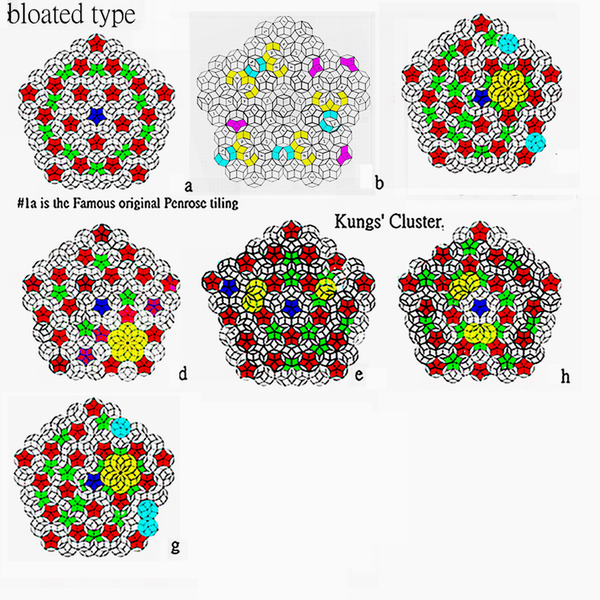
Fig3 Some examples of Bloated type, all five vertex are type-a decagon, 18 chains (bonds) on each side. be noted 3b contains all six different decagon
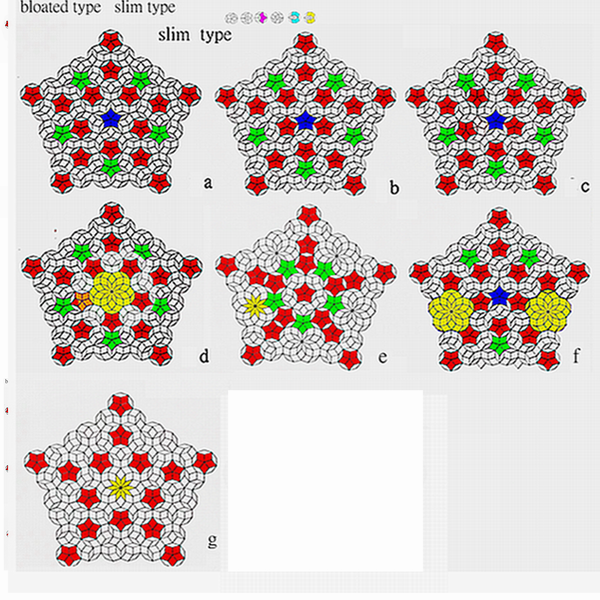
Fig 4 Some examples of slim type, all five vertex are type-a decagon, 18 chains (bonds) on each side.
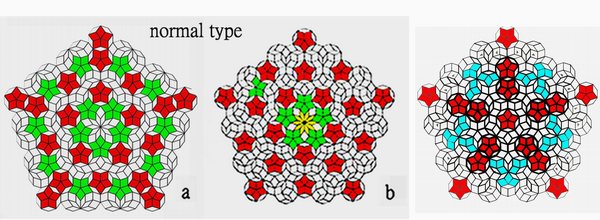
Fig 5 May be named as a normal type, all five vertex are type-a decagon, 18 chains (bonds) on each side.
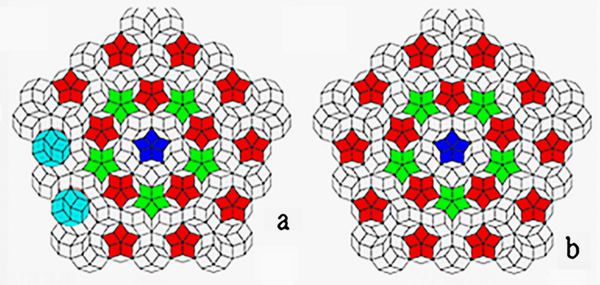 18 chains (bonds) on each side
18 chains (bonds) on each side
Fig 6 the cluster my be counted as a new type , 16 bonds (chains) on each size, vertex are not type-a decagon
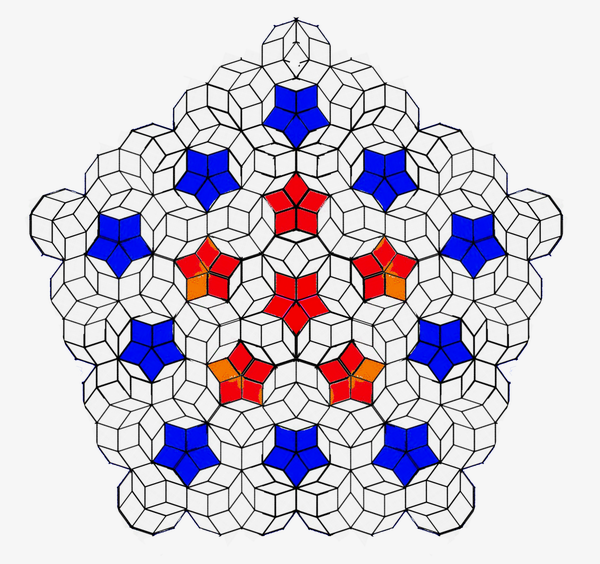
Typic pentagon shape Penrose tiling. vertex are not typic decagon
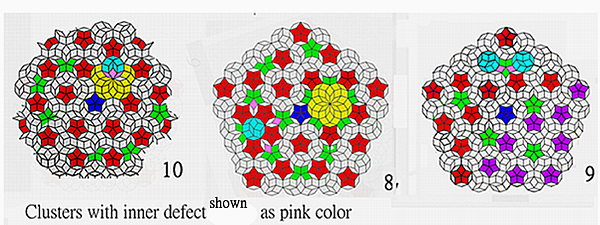
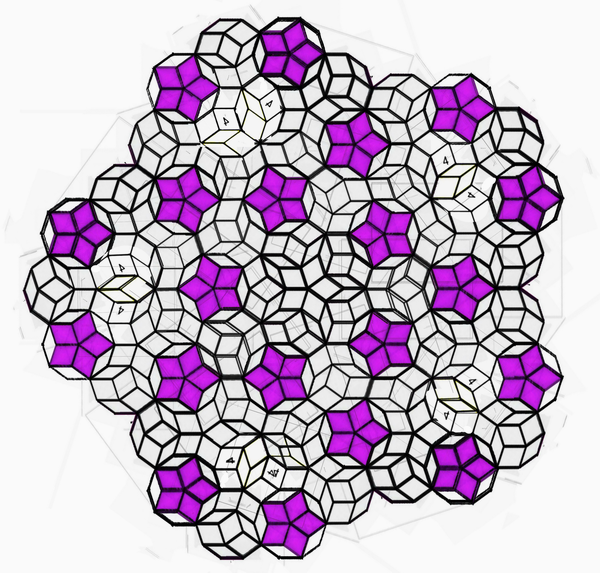
Fig 7 Clusters with inner defect marks as shadow color ,
For the first time all six different molecules (decagonal) are seen to be in one cluster without defects.
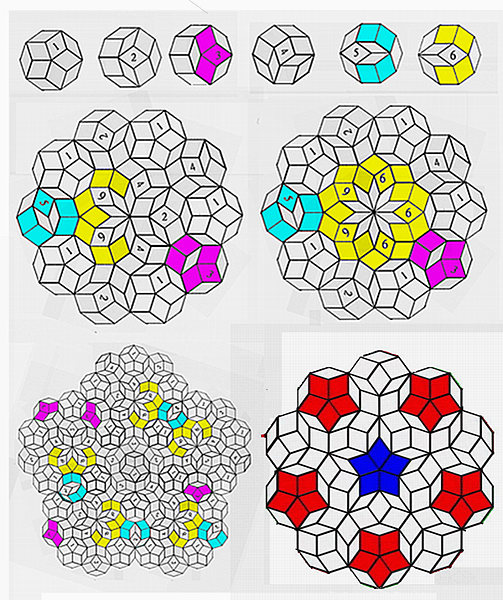
Fig above , There is Penrose tile that contains all six different decagons,defect free, but cannot be further defect-freely extended without (rearranging) and wiping out pink decagons inside, all five vertex are type-a decagon, but not (quintuplet) five-folded symmetrical .
- Bloated type Fig3 1a (swollen type fivefold symmetrical), contains 66 molecules (regular decagon); 21 a-type molecules (decagon). 35 b- type molecules decagon). 10 c-type molecules decagon):
- Slim type fig 4=2a (slim type fivefold symmetrical), contains 55 molecules (regular decagon); 15 a-type molecules (decagon). 35 b- type molecules decagon). 5 c-type molecules decagon):
- Fig 4 -2 b (slim type not fivefold symmetry), contains 55 molecules (regular decagon); 16 type-a molecules decagon). 29 type-b molecules decagon). 10 type-c molecules decagon):
- Normal Type (fivefold symmetric), contains 60 molecules (regular decagon); 20 a- type molecules decagon). 15 b- type molecules decagon). 25 f-type molecules decagon
- Small type contains 49 molecules (regular decagon); a- type molecules decagon). b- type molecules decagon). -type molecules decagon
- Small type (Cluster. may be just a part of Bloated type cluster)

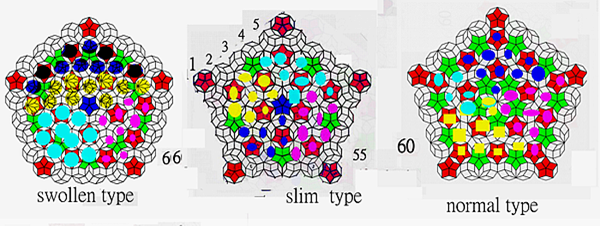
Figure 8 The number of molecules is the same for each cluster type, but the number of molecular species is different.
The cluster couple will become a larger pentagon, the bloated type will remain bloated and the slim type will remain slim. The overlapping part of the cluster couple may have some defects, but these can be easily corrected. The procedure described in the previous step can be followed again until infinity.
The following clusters in Fig 3 and fig 4 have a great chance to be extended to infinite without generating defects, we will demonstrate some examples.
Figure 9 shows four basic schemes to extend the Penrose tiling,
(A) self-couples (including modified multiple couples), (B) multi-swelling-slim surrounding couples, (C) multiple couples.(D) Randomly couple(A)
The modification of the cluster boundary is a necessary condition to achieve defect free.
(A)
self-couple (swollen-swollen couple - slim - slim couple)
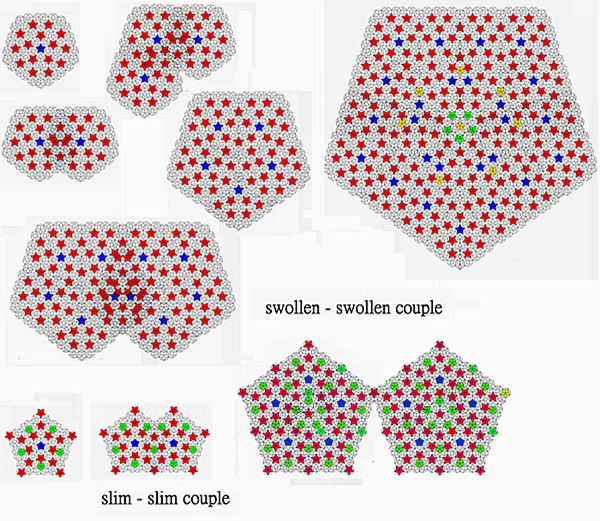
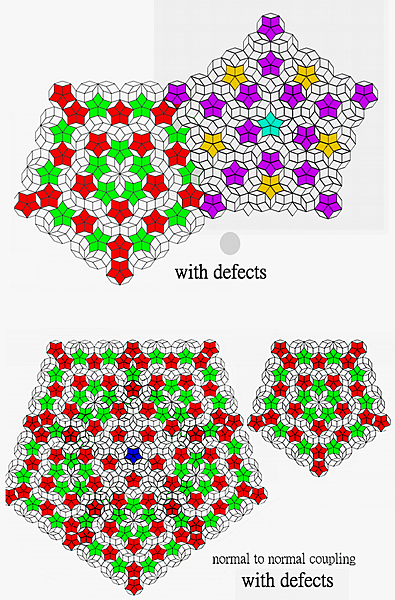
This above mornal to nornal coupling contain defects (may be correctable) on each edge,
swollen - slim couple (coupled, provisional definition,,, where the area of the stack exceeds the bounding molecular part).
A) scheme swollen-slim couple (matching coupling) forms a hexagon with 78 regular decagonal (molecular) hexagons, of which 43 molecules (most of the area coincides) are coupled and repeated, and the "new cluster" of such hexagons (which are noteworthy), can be tessellated (mosaic), (BUT need to eliminate border defects,), and can be used like mutually surrounding couples.
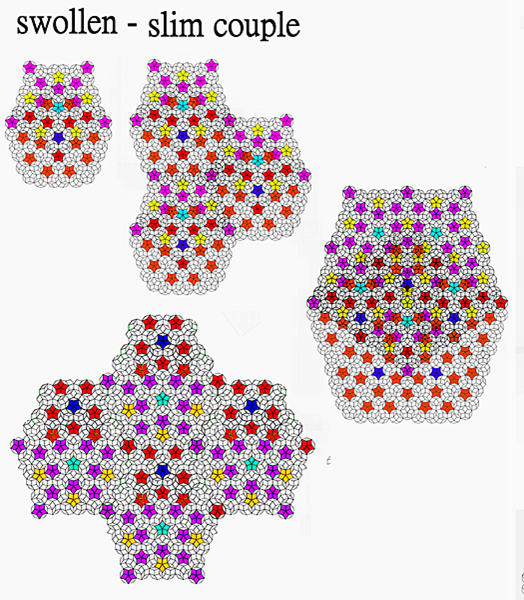
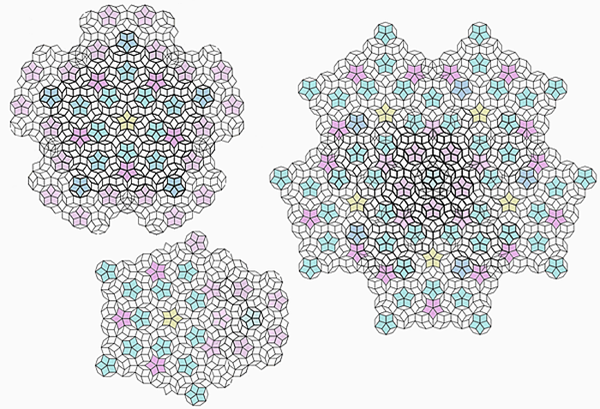
The figure shows the coupling of different clusters. Here, the author intends to leave some defective decagons for readers to fix them (simple). This hybrid coupling can be used for unlimited Penrose tiling combinations. There are inclined intervals for the unit cells so defined.
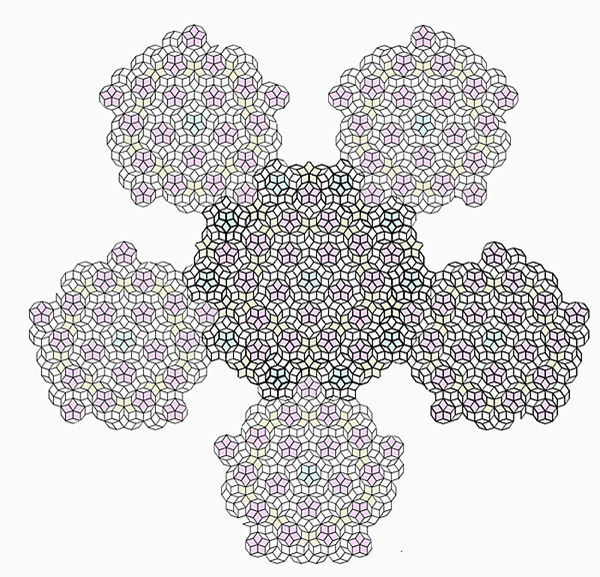
The figure shows the coupling of different clusters. Here, the author intends to leave some defective decagons for readers to fix them (simple). This hybrid coupling can be used for unlimited Penrose tiling combinations. There are slanted shift for the unit (Penrose tike) clusters so defined.
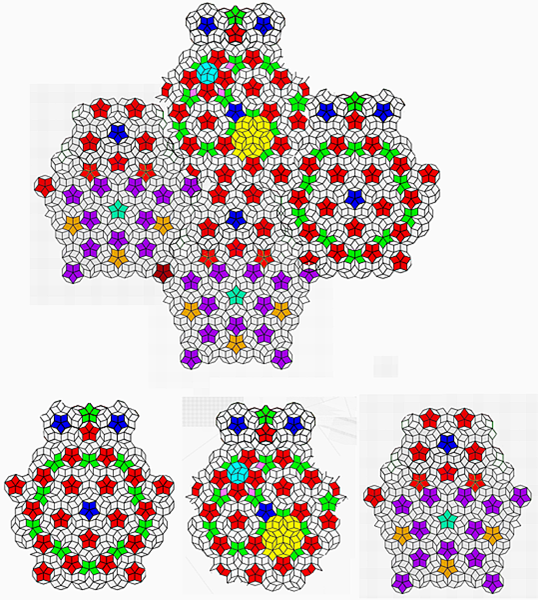
(B) Conjugate couple scheme - mutual surrounding couple-There are five molecules (decagon) on the boundary.
the sempted pace between the two clusters can be filled with six (molecules), forming a new large pentagon shape with 346 decagons .The blank space between the two clusters can be filled with six decagons (molecules) to form a larger pentagon shape cluster, containing 346 decagons (molecules). A thin pentagonal shape with a five-fold symmetrical structure of molecules contains 346?A molecular vacancy can be filled by patching, (here, temporarily defined, the conjugated state is the overlapping region limited to the boundary).
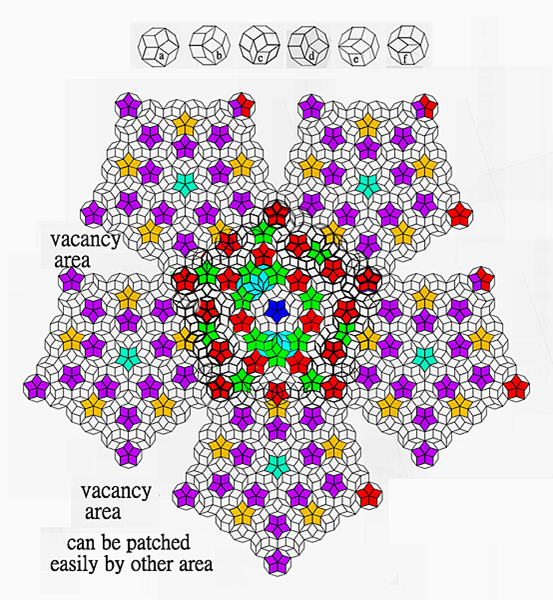
The figure shows how to fill(patch) the "empty area" of the conjugated couple. Since the extended Penrose tiles, more or less reveals a slanted-shift periodic, one can easily find a suitable area to fill (patch) the vacancy.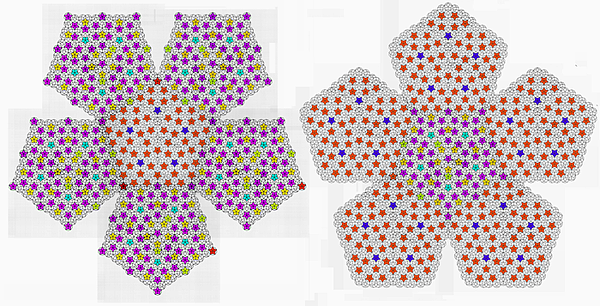
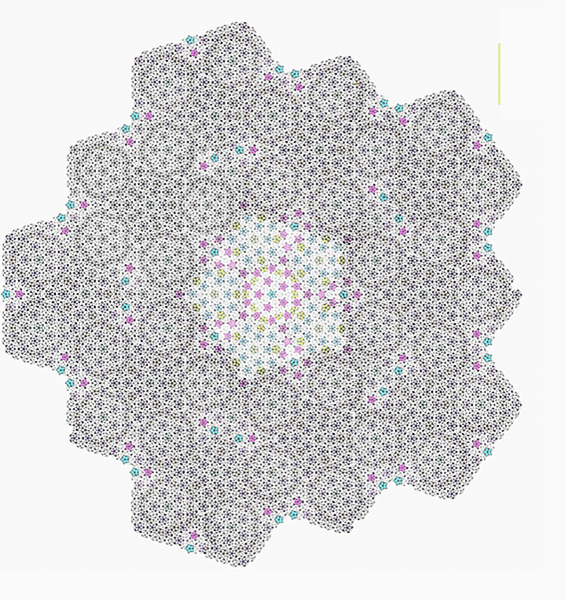
Fig a strange wonderful arrangement! (six basic type clusters together and five basic type clusters together )).
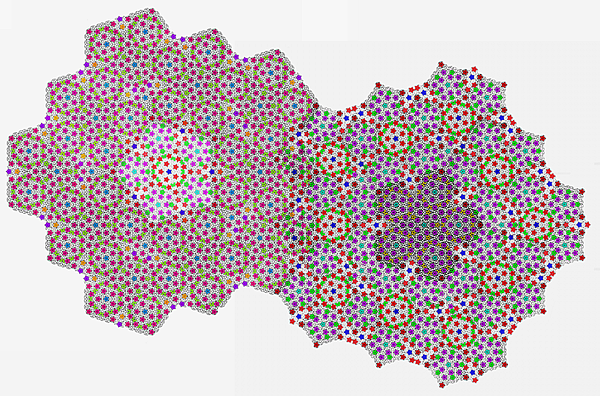
(C) Scheme- Mixed coupling, swollen clusters with different geometries can be formed around each other to form a fat pentagon with 375 molecules as shown in the figure below. Four molecules need to be added to each side of the gap.
Fig Basic extension of Penrose tiling, there are many different combinations to extend Penrose tiling. Self-coupling and surrounding coupling have different Kungs' Clusters at different stages, the following has 230 Decagons
There are many different combinations for basic extension of the Penrose tiling. Different Kungs' clusters have different stages of self-coupling and surrounding coupling, so that there can be an infinite variety of infinitely large Penrose tiles.
Fig The defect area can easily be replaced by one of six squares, the vacancy area may be patched by an area in the counterpart.
Fig #1 self-coupling and #2 self-coupling conjugate states (only the boundary parts are coupled), they may be self-coupled again and again, extending to infinity, or they may be coupled to each other, extending to infinity.
The above is an extension of the Penrose tiles from the origin, which can be extended to infinity using only three decagons of a, b, c positive decagon.
The figure above is extended by the origin Penrose tiling, which can be extended to infinity using only a b c regular decagons.
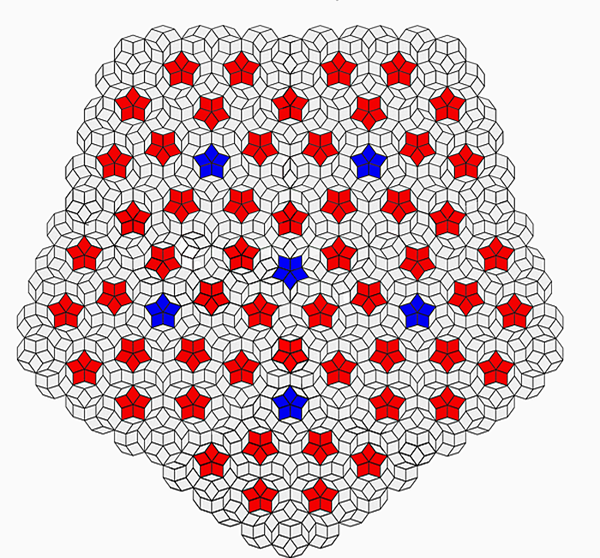
Fig #3 and # 4 self-coupling may also make an infinite Penrose tiling defect free.
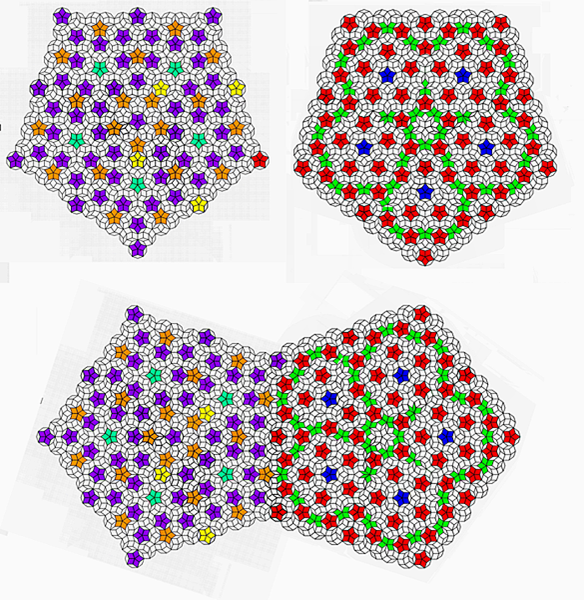
The above is an extension of the Penrose tiles from the originPenrose , which can be extended to infinity using only three decagons of a, b, c regular decagon.
The figure above is extended by the origin Penrose tiling, which can be extended to infinity using only a b c regular decagons.
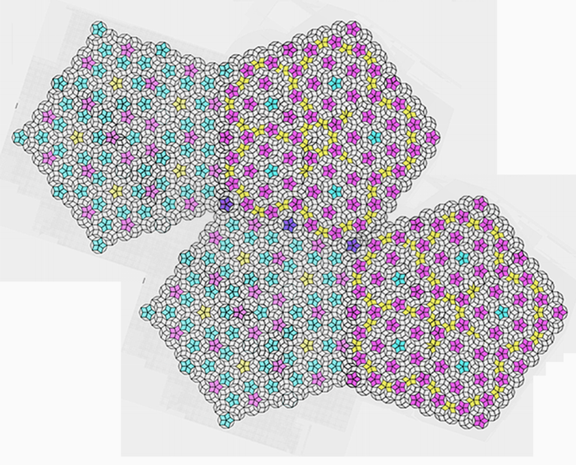
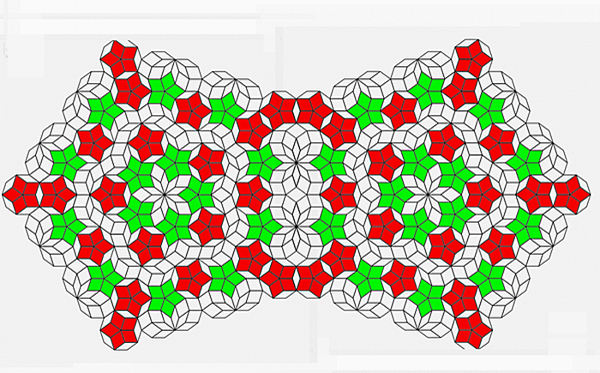
Figure: This one has no defects, but there is a good chance of further expansion without creating defects. In fact, the internal structures of #2 and #3 are identical and should be considered as one, since the edge can be well repaired to meet the requirements and contain #6 and # 5 square.
Fig, #3 and #2 can be well coupled, may not generate defects, see pink area? Reader can try to eliminate them.
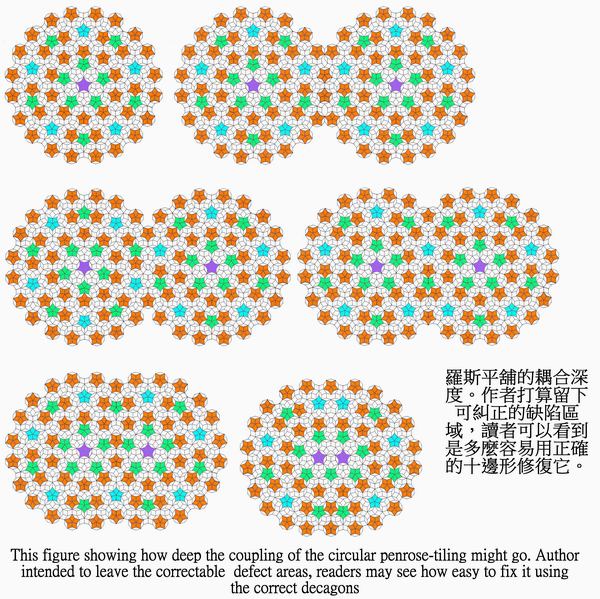
All six decagons coexisted in an defree Penrose tiling and has a potential to be self coupling to infinite


 留言列表
留言列表
